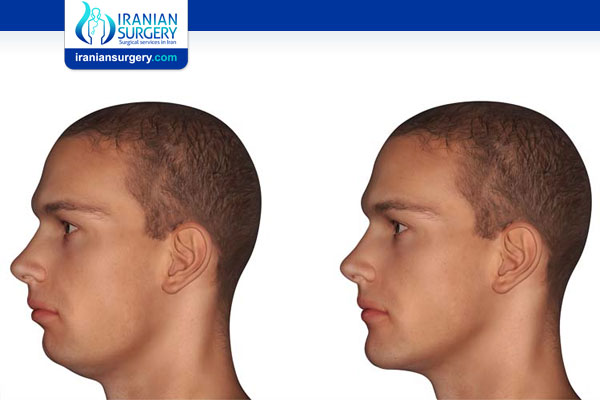What Are Facial Implants Made Of
As you age, your face becomes thinner. Also, Some people might have been born with a very thin. Others might have a diminutive or not very prominent chin. Facial implants can help make a weak chin stronger or increase the amount of volume in your cheeks, whether the volume loss is due to natural thinness or aging.
Unlike fillers, which provide a quick, temporary fix, facial implants are designed to be a permanent fix. They can be made of a variety of materials, each of which is designed to be compatible with the human body and to have a low risk of rejection or allergic reaction. The type of implant that is best for you depends on your preference and the preference of your surgeon.
Read more about : What To Expect After Cheek Implants?
What Materials are Used for Facial Implants?
Silicone
When you hear the word silicone, you might recall horror stories of people having the substance injected into various parts of their bodies or remember the concern over silicone breast implants that occurred a few decades ago. While silicone does have a long history of concern when used in certain areas, when it comes to facial implants, it’s been a viable, reliable option since the mid-20th century.
Silicone facial implants are made of a solid form of the material. They won’t leak or break in the face, nor is it likely that tissue will grow into them. The implants are usually attached to the chin or cheekbones, and tissue grows over them, creating a capsule that holds the implants securely in place. Since the implants don’t usually fuse to the bone or merge with the tissue, silicone implants are usually a lot easier to remove than other options, if that is what a patient wants in the future.
Silicone implants are also available in a variety of different shapes and sizes. If a person has a cleft chin or would like one, there is a cleft chin shaped implant available, for example.
Read more about : Facial plastic surgery
Polyethylene
Polyethylene facial implants are porous, while silicone implants are not. That means that there is a high likelihood that your facial tissue, such as blood vessels, will be able to grow though the implant, firmly fusing it in place. While having the implant attach to your tissues can seem like an advantage, there is a drawback if you decide that you no longer want it. Removal can be difficult and can cause damage to your actual facial tissue.
Implants made of polyethylene are different from silicone implants in a few others ways. They tend to be more rigid and are less easy to sculpt and shape. For that reason, a chin implant made of polyethylene is usually available in two pieces, where are attached to each other during the surgery.
Gore-Tex
A third material option is Gore-Tex, or expanded polytetrafluoroethylene. The material has been in use in facial implants since the late 20th century. Like polyethylene, Gore-Tex implants are porous, meaning that tissue can grow through them. A 2003 study published in JAMA Facial Plastic Surgery showed that Gore-Tex implants tend to have a high rate of success and satisfaction. Less than one percent of patients removed their implants because of infection. One and a half percent of patients had their implants replaced or removed at the request of the patient.
Other Options
When considering a facial implant of any material, it’s important to remember that the results are permanent, unless you choose to have the implants removed. Unlike fat transfer or fillers, your body won’t absorb any part of the implant material.
For that reason, you might consider trying a temporary option, such as Juvederm Voluma or Sculptra, to add volume to the cheek area, before you decide to commit to an implant. An injectable filler will usually provide results for about two years. After that, you can decide to repeat the treatment, or go for something longer lasting, such as an implant.
Types of Cheek Implants Used for Augmentation
Although people of all ages are usually good candidates, cheek implants are typically recommended for younger patients who want to find a permanent solution to fix the bone structures within their cheeks. Fillers are usually recommended for older patients who are dissatisfied with the signs of aging around the midface area, most prominently volume depletion that makes their cheeks look sunken in.
With that in mind, there are three types of cheek implants that you should know about:
Submalar Implants
The submalar is located just beneath the lower eye line at the very point where the cheekbone begins. Around your early to mid-40s, you might begin to notice volume depletion in this region as your fat cells begin to descend down toward your lower cheek and chin area. This results in the cheeks looking sunken in and the bottom of the face developing jowls over time. Submalar implants are an easy and affordable solution to this problem as they’re placed directly above where the cheekbones begin.
Malar Implants
The malar region is just below the submalar area. It’s basically where your cheekbone sits. Malar implants are less common than submalar implants and they’re more commonly requested by younger patients in their 20s and 30s. The purpose of malar implants is to create a sharper, more angular shape that results in a strong and more defined bone structure.
Combination
Although it’s uncommon, some patients might opt to have both procedures performed at once if they feel that their cheekbones aren’t well defined, and they’ve lost volume in their midface area. Combining both procedures essentially allows patients to have the best of both worlds in terms of more voluminous and structurally sound cheekbones.
Source:
https://www.palmbeachface.com/blog/materials-used-facial-implants
https://www.torontofacialplastic.com/blog/cheek-implants-types-surgery-recovery-benefits/


